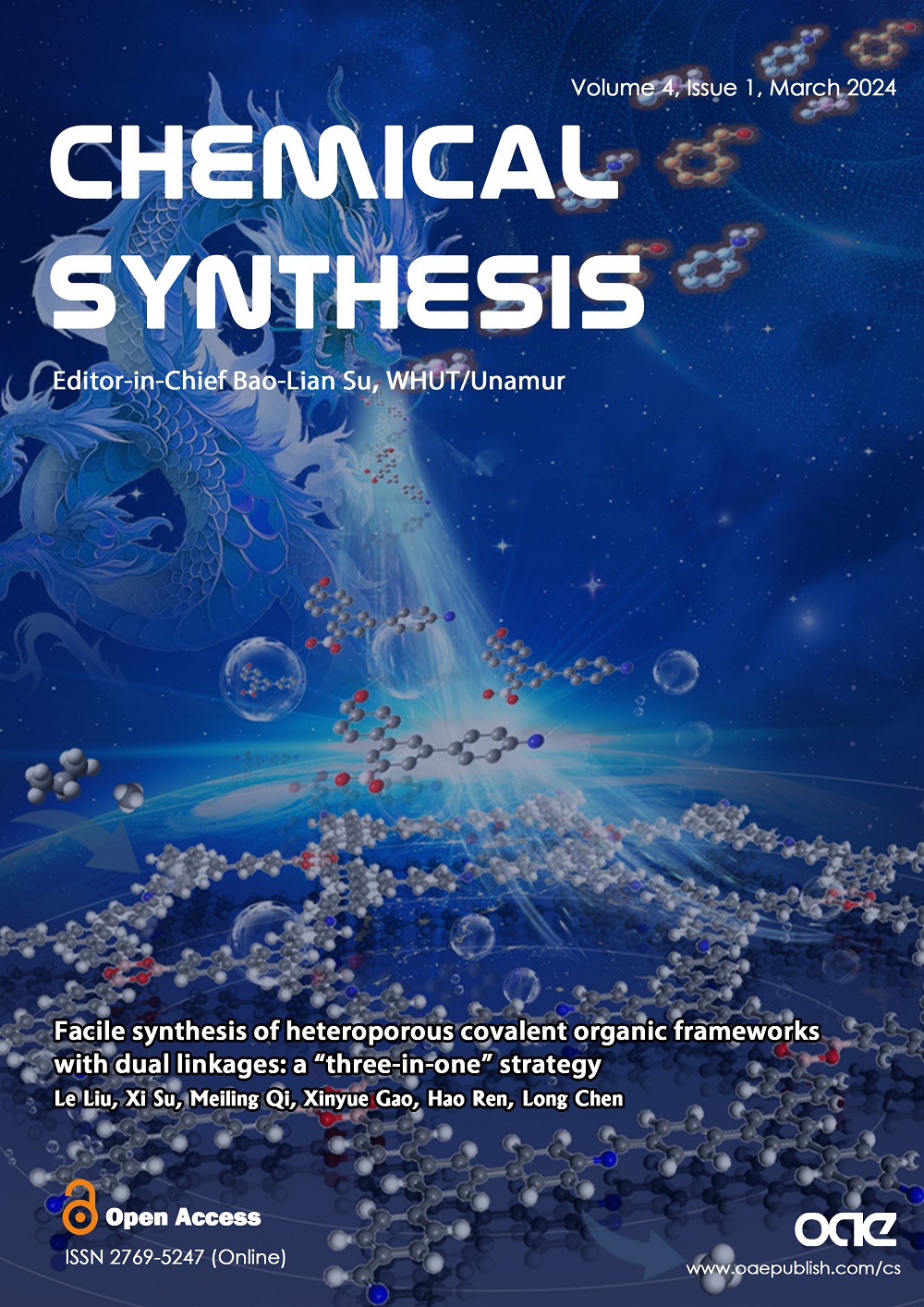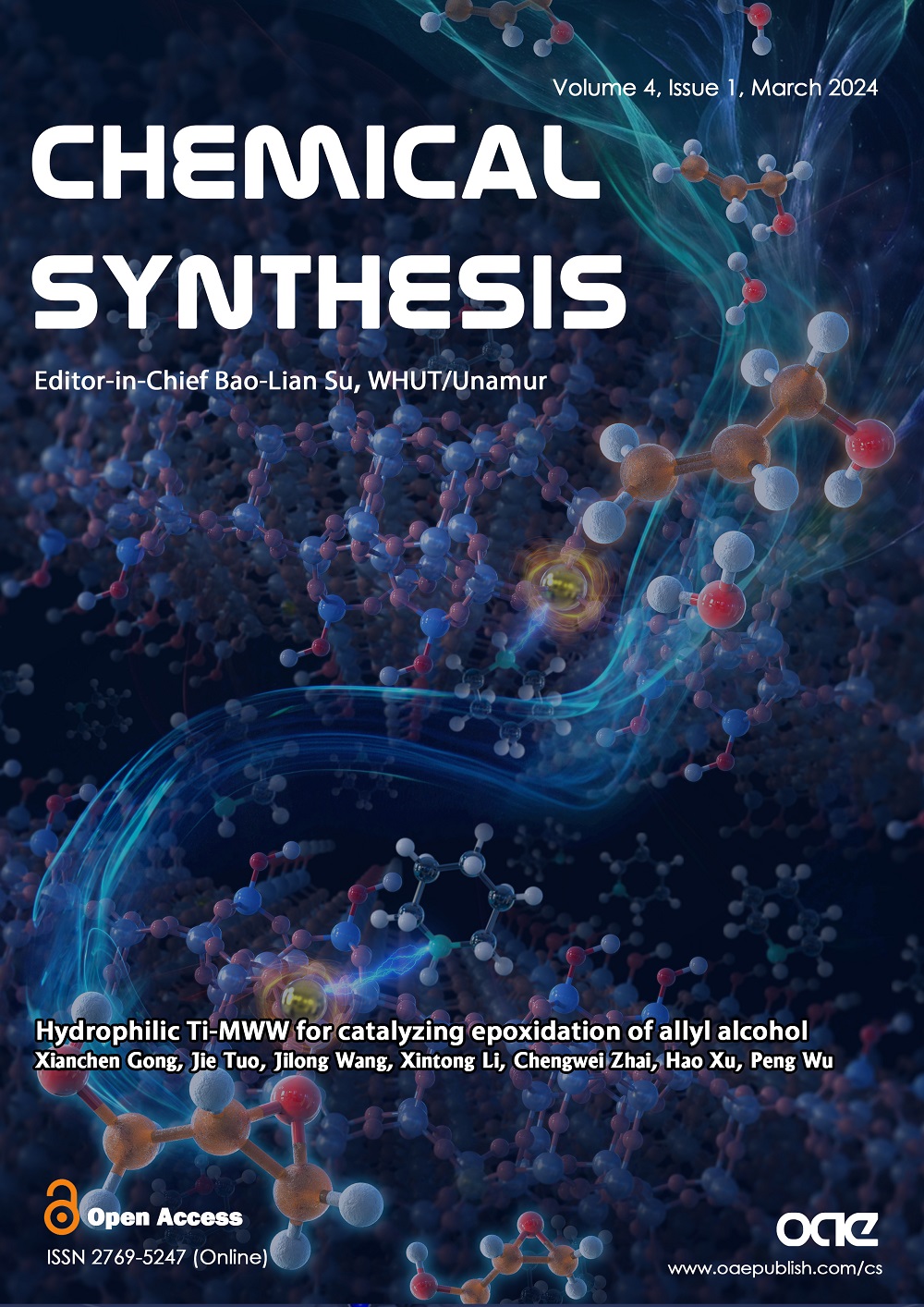Volume 4, Issue 1 (March, 2024) – 16 articles
Cover Picture: Covalent organic frameworks (COFs) with dual linkages can combine advantages and properties of two distinct connectors, enabling the development of multifunctional materials. However, due to challenges in simultaneously forming two types of linkages, the synthesis of COFs with dual linkages remains a significant challenge. Herein, we propose a “three-in-one” molecular design strategy for synthesizing COFs with dual linkages (4-amino-4"-(2,2-dioxan-1,3-dioxan-5-yl)-[1,1':3',1"-terphenyl]-5'-yl) boronic acid (ADTB)-COF and (4'-amino-5'-(4-(2,2-dioxan-1,3-dioxan-5-yl)phenyl)-[1,1':3',1'-teroxan]-5-yl) boronic acid (ADPB)-COF through reversible condensation between three distinct functionalization groups on the monomer. Benefitting from the abundant micropores and high surface area, ADPB-COF showed excellent selective adsorption capability of C3H8 over CH4 (174, 298 K/1 bar). The present work introduces a new approach for constructing COFs with dual linkages, which greatly simplifies the synthesis process and provides a novel opportunity to develop functional materials based on COFs with multi-linkages.
view this paper Back Cover Picture: Titanosilicates are widely applied in the alkene epoxidation reactions with high reaction rate and selectivity to desired products. Their catalytic performance depends on the structure topology, the micro-environment of Ti active sites, and the hydrophobicity/hydrophilicity of zeolite framework. Herein, we focus on a hydrophilic substrate of allyl alcohol (AAL) and investigated catalytic performance of four titanosilicates (TS-1, Ti-MOR, Ti-MWW, and Re-Ti-MWW) in the AAL epoxidation reaction with hydrogen peroxide as the oxidant. Among them, Re-Ti-MWW, synthesized via the post-modification of Ti-MWW with piperidine, exhibited the highest activity. Moreover, the preferred solvent changed from MeCN for Ti-MWW to H2O for Re-Ti-MWW. The relative diffusion rate of AAL over Re-Ti-MWW was up to 466 × 10-7 s-1, much larger than those of other zeolites. The higher diffusion rate of Re-Ti-MWW was probably derived from the higher framework hydrophilicity as revealed by the smaller water contact angle of Re-Ti-MWW compared to the other zeolites, which contributed to the high activity in AAL epoxidation. In the continuous slurry reactor, Re-Ti-MWW achieved a high catalytic lifetime of 163 h, with the selectivity of desirable glycidol product maintained at > 97% in the H2O solvent system, showing high potential as an industrial catalyst for the AAL epoxidation reaction.
view this paper









